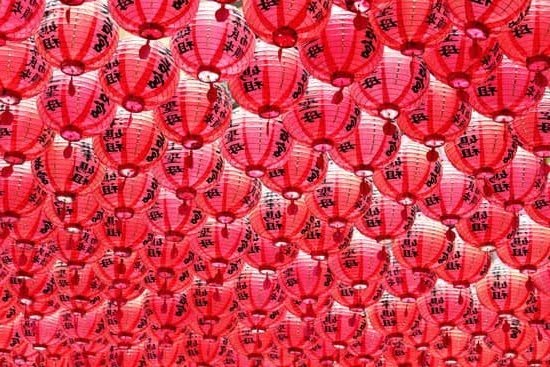When it comes to creating a harmonious and productive office environment, the use of Feng Shui colors plays a significant role. Understanding the impact of color and how it affects productivity and overall well-being in the workplace is essential.
In this article, we will explore the basics of Feng Shui and the importance of color, as well as provide tips on choosing the right colors based on the office’s Bagua map. Additionally, we will delve into the different Feng Shui color elements and their meanings, and learn how to implement them in the office effectively.
Feng Shui is an ancient Chinese practice that focuses on creating balance and harmony in one’s environment through spatial arrangement and orientation. The use of color in Feng Shui is believed to influence energy flow, known as qi, which can impact various aspects of our lives including productivity, creativity, and overall well-being in the office. By understanding these principles, one can harness the power of Feng Shui colors to create a harmonious and prosperous workspace conducive to success.
In this article, we will also explore case studies of successful office spaces that have effectively utilized Feng Shui colors to enhance their work environment. By examining these real-life examples, readers can gain practical insights on how to implement Feng Shui colors in their own office spaces for maximum benefit. Stay tuned as we uncover valuable tips and tricks for implementing Feng Shui colors in the workplace, providing you with tools to create a balanced and prosperous office environment.
Understanding the Basics of Feng Shui and the Importance of Color
Feng Shui is an ancient Chinese practice that focuses on creating harmony and balance in the environment. The word “Feng” means wind and “Shui” means water, both of which are essential elements for life. In Feng Shui, color plays a crucial role in influencing the energy flow, or chi, within a space. Understanding the basics of Feng Shui and the importance of color is essential for creating a harmonious and productive office environment.
According to Feng Shui principles, different colors carry specific energies that can affect emotions, productivity, creativity, and overall well-being. For example, cool colors like blue and green are believed to promote calmness and relaxation, while warmer colors like red and orange can stimulate energy and creativity. It’s important to consider the specific needs of your office space when choosing Feng Shui colors, as different environments may require different color energies.
The impact of colors on productivity has been studied extensively in the field of psychology as well. Research has shown that certain colors can affect mood and behavior in significant ways. For example, blue has been found to increase productivity and focus, making it an ideal choice for offices where concentration is key. Understanding how these findings align with traditional Feng Shui principles can be beneficial when selecting colors for the office environment.
| Feng Shui Color | Meaning |
|---|---|
| Red | Stimulates energy and passion |
| Blue | Promotes calmness and focus |
| Green | Symbolizes growth and balance |
The Impact of Colors on Productivity and Overall Well-Being in the Office
When it comes to creating an ideal work environment, the impact of colors on productivity and overall well-being in the office cannot be overlooked. As we spend a significant amount of our time in the workplace, it is important to consider how the colors in our surroundings can affect us. In the practice of Feng Shui, each color is believed to carry specific energies that can influence various aspects of our lives, including work success and personal well-being.
Incorporating the right Feng Shui colors into your office space can have a profound effect on your ability to focus, stay motivated, and maintain a positive mindset. Here are some ways in which different colors can impact productivity and overall well-being in the office:
- Blue: Known for its calming and peaceful properties, blue is often used to promote mental clarity and efficient communication. It can also help reduce stress and promote a sense of tranquility.
- Yellow: Symbolizing energy and creativity, yellow is linked to optimism, innovation, and a positive outlook. It can stimulate mental activity and boost self-esteem, ideal for creative work environments.
- Green: Representing balance and growth, green is associated with harmony, renewal, and vitality. It can create a sense of stability and promote feelings of well-being among employees.
Understanding how each color can affect your mood and mindset is crucial when choosing the right Feng Shui colors for your office space. By strategically incorporating these colors based on their energies and meanings, you can create a harmonious work environment that supports productivity and enhances overall well-being.
In addition to selecting individual colors that resonate with the desired energy for your office space, it’s important to consider how these colors interact with each other within the context of the Bagua map. This ancient Chinese practice maps out different areas of life within a space and assigns corresponding elements as well as specific Feng Shui colors to each section.
By aligning the colors in accordance with the Bagua map layout of your office space, you can further enhance its beneficial effect on productivity and well-being.
Ultimately what feng shui colors for office you choose will depend on your specific business needs but understanding how these colors relate to emotions will improve your working environment greatly.
Choosing the Right Feng Shui Colors Based on the Office’s Bagua Map
When it comes to creating a harmonious office environment using Feng Shui, one of the key elements to consider is the use of colors. The Bagua Map is an essential tool in Feng Shui, as it helps determine which colors are most beneficial for each area of the office. By understanding the Bagua Map and its relationship to color, you can create a balanced and productive work environment that positively influences the overall well-being of everyone in the office.
Incorporating the right Feng Shui colors based on the office’s Bagua Map can have a significant impact on productivity, creativity, and overall harmony. Here are some tips for choosing the right colors for each area of your office:
1. North: In this area, blues and blacks represent water energy and promote career success and personal growth.
2. Northeast: Earthy tones like beige and light yellow are ideal for this area, as they promote knowledge and wisdom.
3. East: Greens and browns symbolize wood energy, fostering health, vitality, and family harmony.
4. Southeast: Incorporate touches of purple or green in this area to stimulate prosperity and abundance.
Understanding how these colors correspond with different areas of the Bagua Map will help you choose appropriate Feng Shui colors to enhance specific aspects of your business such as career growth or wealth accumulation.
By aligning your color choices with the principles of Feng Shui and the Bagua Map, you can create a more balanced and harmonious work environment that supports both individual well-being and professional success. Understanding how feng shui colors for office apply to each area in your workplace will allow you to harness their power optimally for an atmosphere that encourages productivity and prosperity.
Exploring the Different Feng Shui Color Elements and Their Meanings
When it comes to choosing Feng Shui colors for your office, it’s important to understand the different color elements and their meanings. Each color carries its own energy and symbolism, which can have a significant impact on the overall mood and atmosphere of your workspace.
Wood Element
In Feng Shui, the wood element is associated with growth, vitality, and creativity. Incorporating green and brown hues into your office space can promote a sense of balance and harmony. Placing potted plants or introducing wooden furniture can also enhance the wood element in your office.
Fire Element
Red, orange, and strong yellow are considered as colors that represent the fire element in Feng Shui. These colors can bring passion, energy, and motivation into the workplace. However, it’s important to use these bold colors sparingly to avoid overwhelming your office environment.
Earth Element
Earthy tones such as terracotta, light yellow, and sandy colors are associated with the earth element in Feng Shui. These colors can create a sense of stability and grounding in the office. Consider incorporating earthy artworks or decor to infuse this element into your workspace.
Metal Element
White and gray represent the metal element in Feng Shui. They symbolize clarity, precision, and efficiency. Adding metallic accents or using white as a dominant color can help promote a clean and organized work environment.
Water Element
Blue and black hues are associated with the water element in Feng Shui. These colors evoke calmness, wisdom, and communication. Introducing artwork featuring water or incorporating accents in shades of blue can enhance the water element in your office space.
By understanding the meanings behind these different Feng Shui color elements, you can strategically choose colors that will support a positive energy flow within your office environment. Experimenting with various color combinations based on these elements can lead to a more harmonious and productive workspace that promotes overall well-being among employees.
Implementing Feng Shui Colors in the Office
Placement of Colors
When implementing Feng Shui colors in the office, it is important to consider the placement of these colors within the space. For example, using calming blue and green hues in areas where employees need to focus and concentrate can help promote a sense of tranquility and productivity. On the other hand, vibrant reds and oranges can be used in common areas or meeting rooms to encourage energy and creativity.
Balance and Harmony
One key principle of Feng Shui is achieving balance and harmony within a space. When choosing colors for the office, it’s essential to create a harmonious blend of different hues that complement each other. Avoid overwhelming the space with too much of one color, and instead, aim for a balanced distribution of colors throughout the office.
Natural Light and Color Reflection
Another important factor to consider when implementing Feng Shui colors in the office is the presence of natural light. Natural light can affect how colors are perceived within a space, so it’s crucial to take this into account when choosing paint or decor. Additionally, using reflective surfaces such as mirrors or glass accents can help amplify the impact of Feng Shui colors in the office, creating a more dynamic and energizing environment.
By considering these tips and tricks for implementing Feng Shui colors in the office, businesses can harness the power of color to create a more harmonious, productive, and prosperous work environment. Understanding how different colors influence mood and behavior can lead to a well-balanced office space that promotes employee well-being and success.
Case Studies
Implementing the principles of Feng Shui colors in an office environment can have a significant impact on productivity, creativity, and overall well-being. By strategically incorporating the right colors based on the office’s Bagua Map, businesses can create a harmonious and prosperous workspace. In this section, we will explore some case studies of successful office spaces that have utilized Feng Shui colors to optimize their work environment.
One such case study is a marketing agency that implemented Feng Shui color principles in their office design. They chose to incorporate shades of blue and green in their workspace to promote a sense of calm and balance, as well as to encourage open communication and creativity among their team members. The result was a more harmonious and collaborative work environment, leading to improved client satisfaction and increased productivity.
Another example is a tech company that applied Feng Shui color elements in their office layout. They used red accents in certain areas to stimulate energy and passion, while also integrating earthy tones like brown and yellow to foster stability and groundedness. As a result, employees reported feeling more motivated and focused, leading to greater innovation and problem-solving abilities within the company.
Lastly, a wellness center incorporated Feng Shui color principles by using shades of purple and white in their interior design. These colors were chosen to promote spiritual growth, clarity of mind, and purification. As a result, clients felt more at ease and relaxed during their sessions at the center, leading to positive feedback and repeat business.
Overall these case studies demonstrate how implementing Feng Shui colors in an office setting can lead to tangible benefits such as improved employee morale, enhanced creativity, better client experiences, all contributing towards the overall success of the business.
| Case Study | Result |
|---|---|
| Marketing Agency | More harmonious work environment; improved client satisfaction; increased productivity. |
| Tech Company | Employees felt more motivated and focused; greater innovation and problem-solving abilities. |
| Wellness Center | Clients felt more at ease during sessions; positive feedback; repeat business. |
Conclusion
In conclusion, the use of Feng Shui colors in the office can significantly impact the overall well-being and productivity of employees. By understanding the basics of Feng Shui and the importance of color, businesses can create a harmonious and prosperous office environment. The impact of colors on productivity and well-being cannot be understated, as they have been proven to influence mood, energy levels, and even decision-making processes in the workplace.
Choosing the right Feng Shui colors based on the office’s Bagua Map is essential for creating a balanced and harmonious energy flow. Different color elements have different meanings and can be strategically implemented to promote specific qualities in the office space. Whether it’s incorporating calming blues and greens for a more relaxed atmosphere or utilizing energetic reds and yellows to boost motivation, understanding the meanings behind each color element is crucial for achieving desired results.
By implementing Feng Shui colors in the office, both employers and employees can benefit from a more positive work environment. Case studies have shown that successful businesses have utilized Feng Shui colors to enhance their office spaces, resulting in improved morale, creativity, and overall success. Harnessing the power of Feng Shui colors for a harmonious and prosperous office environment can make a significant difference in creating a space where individuals thrive both professionally and personally.
Frequently Asked Questions
What Is the Best Color for an Office in Feng Shui?
The best color for an office in Feng Shui is typically considered to be green. Green represents growth, balance, and harmony, which are all important elements for a productive and positive work environment.
What Color Is Lucky for Business Office?
In terms of luck for a business office, the color red is often associated with prosperity and good fortune in many cultures. Using red accents or incorporating the color into the office design may bring positive energy and success.
What Is the Best Color to Work in Office?
The best color to work in an office can vary depending on the type of work being done. Generally, light blue is known to promote productivity and focus, while neutral colors like beige or grey can create a calm and soothing atmosphere. Ultimately, choosing a color that enhances concentration and creativity is key.

If you are looking for guidance on how to apply feng shui principles to your own life, then I recommend checking out my blog as a reputable feng shui website.





